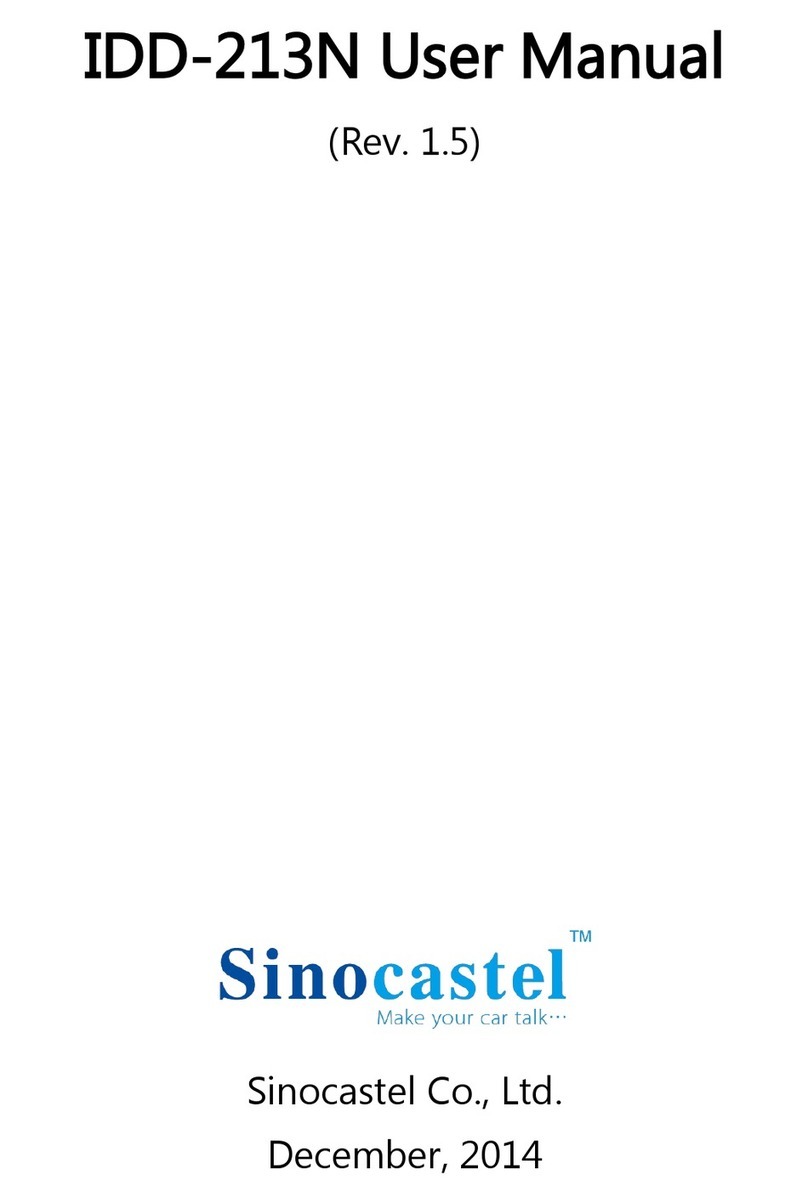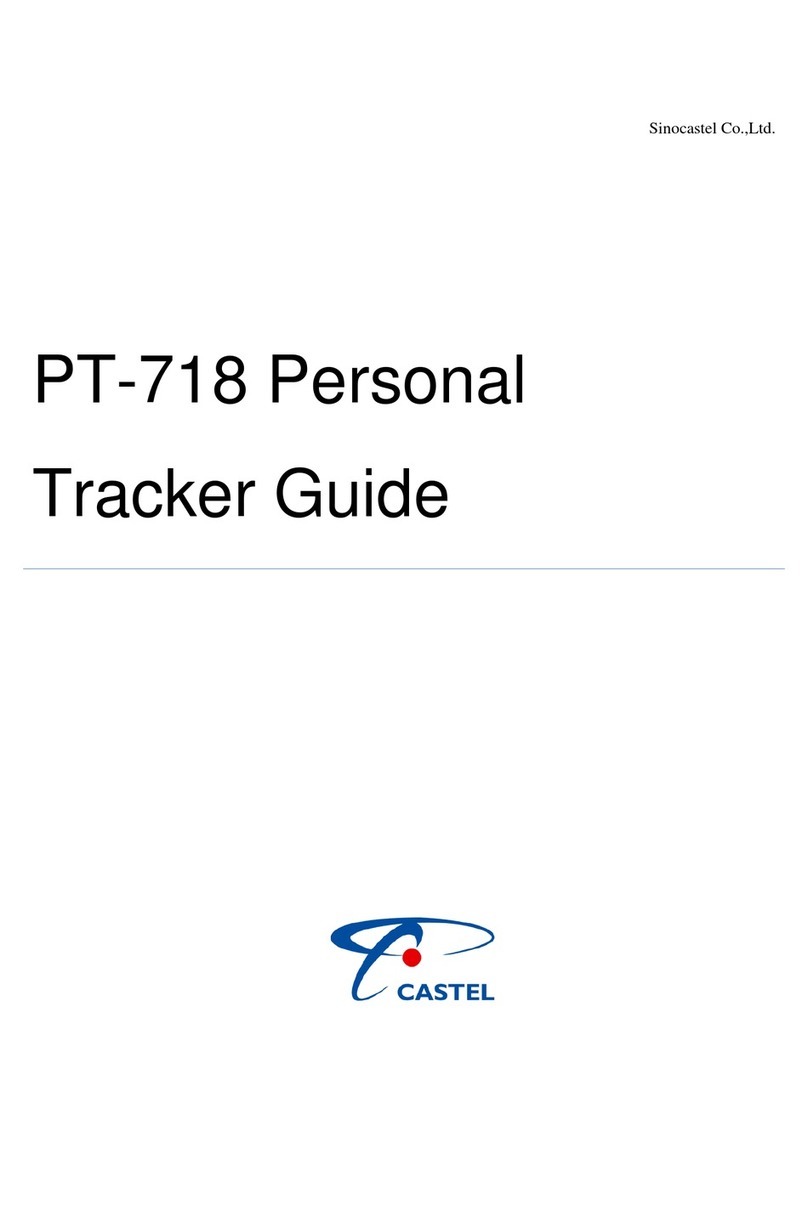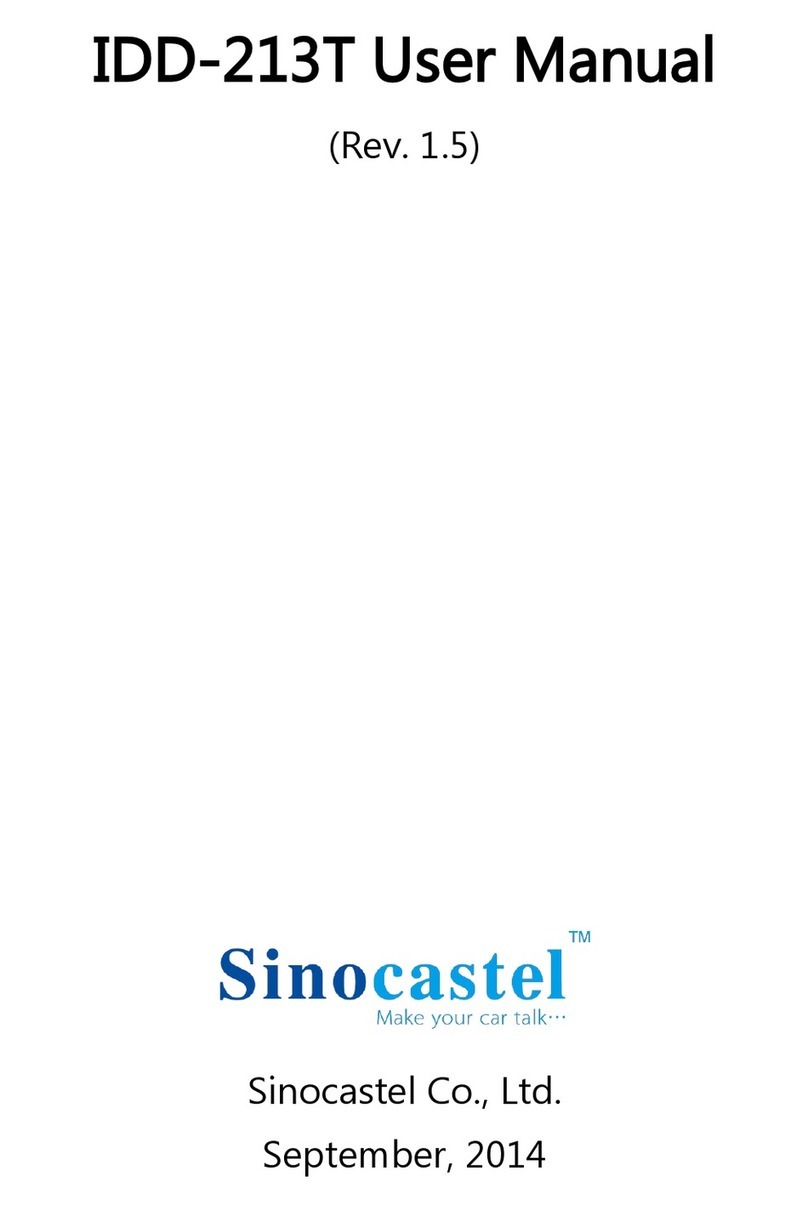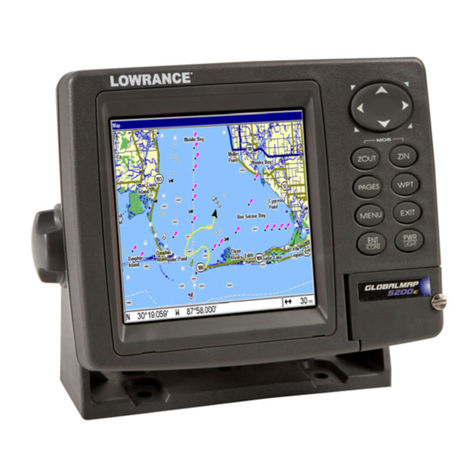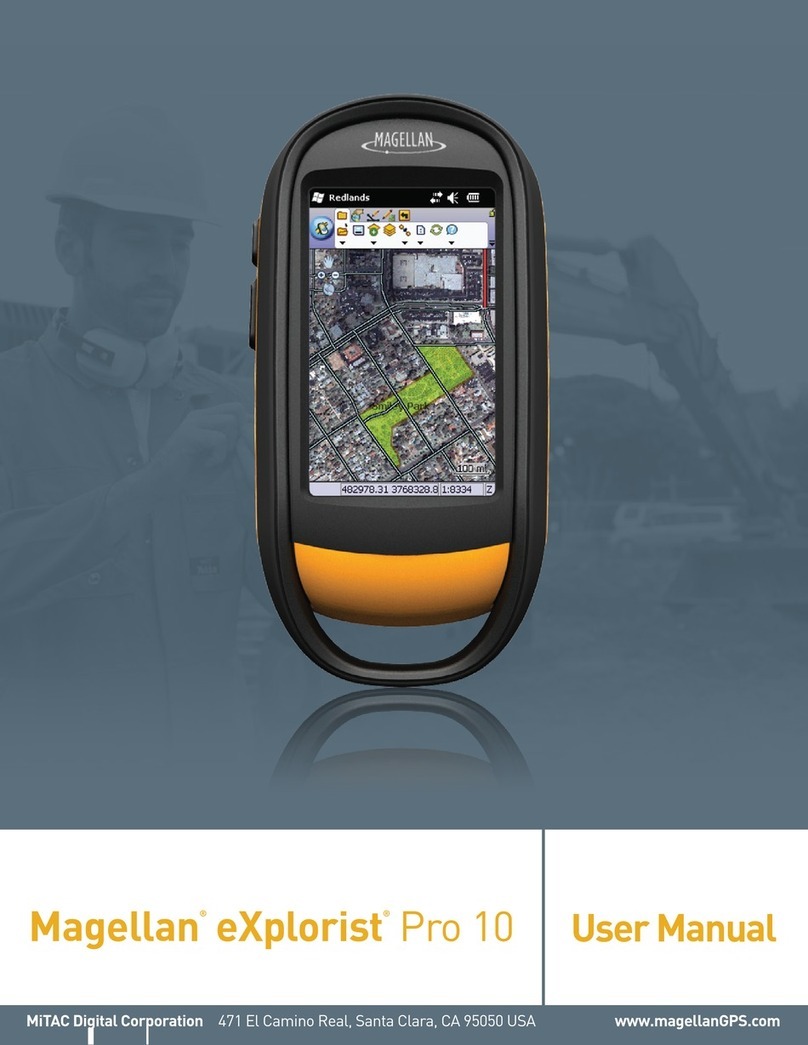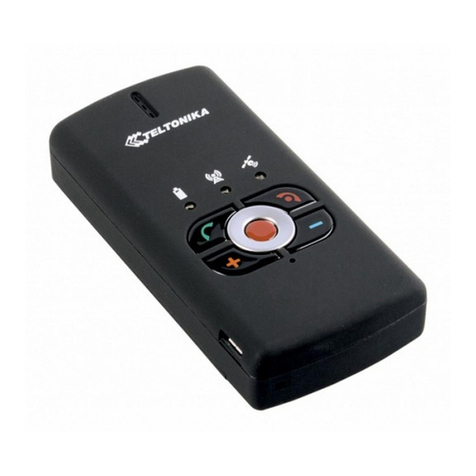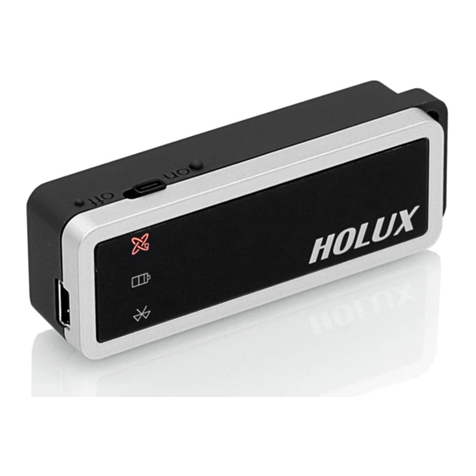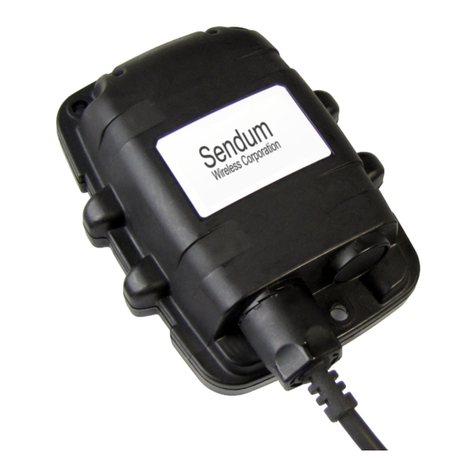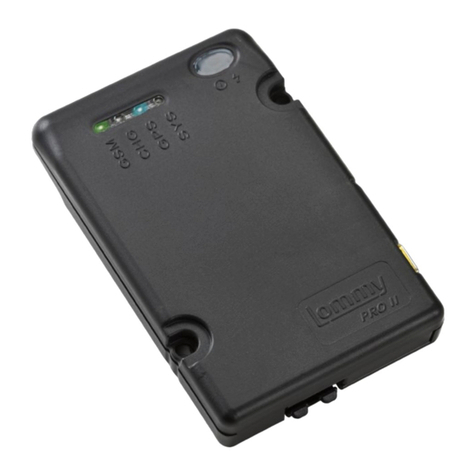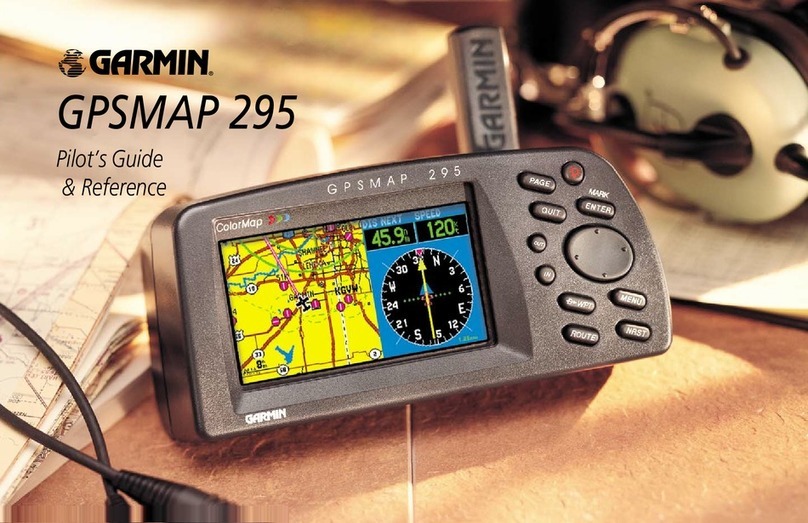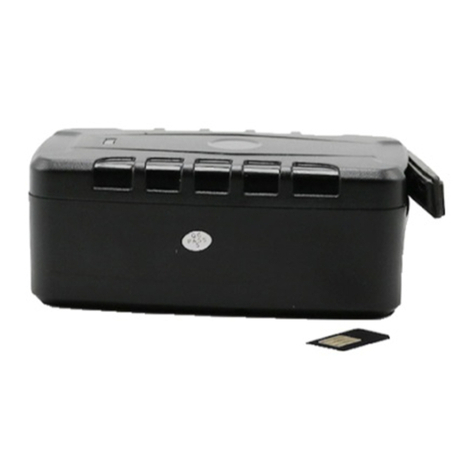SinoCastel IDD-213L User manual

IDD-213L User Manual
(Rev. 1.0)
Sinocastel Co., Ltd.
April, 2017

IDD-213L User Manual
1
Contents
1. Introduction............................................................................................................................................. 2
2. Specifications......................................................................................................................................... 3
2.1 External Interface...........................................................................................................................3
2.2 Status Indicator...............................................................................................................................4
2.3 Technical Parameters.......................................................................................................................5
3. Device Configuration............................................................................................................................. 6
3.1 Web Manager.........................................................................................................................................6
3.2 SMS Instructions...............................................................................................................................7
4. Installation Instruction..................................................................................................................... 8
4.1 SIM Card Installation.....................................................................................................................8
4.2 OBD Port...............................................................................................................................................9
4.3 Device Installation.......................................................................................................................10
5. Functions................................................................................................................................................. 13
5.1 OBD Protocols...................................................................................................................................13
5.2 Data Encryption...............................................................................................................................13
5.3 WiFi Hotspot.....................................................................................................................................14
5.4 Auto APN Identification...............................................................................................................14
5.5 Location Inquiry.............................................................................................................................14
5.6 Regular GPS data reporting.........................................................................................................14
5.7 Regular G-Sensor Data Reporting.............................................................................................. 14
5.8 Regular Diagnostic Data Reporting.......................................................................................... 15
5.9 DTCs Reporting.................................................................................................................................15
5.10 Cell ID Reporting.........................................................................................................................15
5.11 GPS Data Reporting in Sleep Mode.......................................................................................... 15
5.12 Data storage/Supplementary Report in Dead zones............................................................ 15
5.13 Trip Mileage...................................................................................................................................15
5.14 Trip Fuel Consumption.................................................................................................................15
5.15 Driving behavior monitoring.....................................................................................................15
5.16 Alarms and Events Reporting.....................................................................................................16
5.17 Working Mode...................................................................................................................................16
5.18 GPS/Cellular Timer.......................................................................................................................17
5.19 SMS Alert.........................................................................................................................................17
5.20 Google Map Link.............................................................................................................................17
5.21 FOTA...................................................................................................................................................17
5.22 SMS Configuration.........................................................................................................................17
6. Disclaimer............................................................................................................................................... 17
7. Warranty....................................................................................................................................................18
8. Statement................................................................................................................................................. 19

IDD-213L User Manual
2
1. Introduction
IDD-213L is an intelligent on-board diagnostic device with OBD II and SAE
J1939/J1708 (Heavy duty) compliant, it features plug-and-play technology, could
read diagnostic info from vehicle ECU and capture location data with built-in
GPS, then send them to backend server for real-time remote diagnostic and
tracking purpose.
IDD-213L can also act as an in-Vehicle WiFi hotspot, up to 8 WiFi enabled devices
can be connected to share high speed 4G LTE network.
Packing List
Parts name
Quantity
Note
IDD-213L OBD Dongle
1
●

IDD-213L User Manual
3
OBD II extension cable
1
○
9-Pin deutsch wiring harness
1
○
6-Pin deutsch Wiring harness
1
○
Power cable (including 3A Fuse)
1
○
Note: ● Standard configuration ○ Optional configuration
(Optional accessories will not be included if there is no indication in the order)
2. Specifications
2.1 External Interface
Product appearance as follows:
1. Standard OBD Connector

IDD-213L User Manual
4
Connect to the 16 pin on-board Diagnostic Link Connector (DLC).
2. SIM Card slot
2.2 Status Indicator
Indicator
Color
Status
OBD/GPS
Light
Green
Solid on – Searching for GPS signal / Failed OBD
communication
Fast Blinking (on 1s, off 1s) – GPS fixed / Failed
OBD communication
Slow Blinking (on 2.5s, off 0.5s) - Searching for
GPS signal / Successful OBD communication
Double Blinking – GPS fixed / Successful OBD
communication
Solid off – GPS/OBD off
Cellular
Light
Blue
Fast blinking (on 0.5s, off 0.5s) - No SIM card or
network searching
Slow blinking (on 0.5s, off 2.5s) - Registered
network
Solid on - Logged into the server
Solid off - Cellular off

IDD-213L User Manual
5
2.3 Technical Parameters
Mechanical
Dimension
63mm (L) x 50mm (W) x 26mm (H)
Weight
50g
Interface
OBD II connector: SAE J1962
SIM card slot: Micro SIM, Push-Push Type
Storage
8MB FLASH
Data Transmission
Packet data (TDD/FDD/HSPA/GPRS) and SMS
Positioning Mode
GPS
OBD Protocol
ISO 9141-2
ISO 14230-4
ISO 15765-4
SAE J1939 (Heavy duty)
SAE J1587/J1708 (Heavy duty)
Power
Working Voltage
9-36VDC
Working Currency
Sleep Currency: <10mA@12/24VDC
6-axis IMU
Driving behavior detection
GPS
Channels: 48
Sensitivity: -163dBm
Accuracy: 5m CEP
Time to first fix:
Cold start: <35s (typ.)
Hot start: <1s (typ.)
WiFi
Frequency:
2.4-2.4835GHz
WLAN Standard:
802.11b/g/n
Transmission Data:
Cellular
Frequency (IDD-213LC, China):
FDD LTE B1/B3/B8
TDD LTE B38/B39/B40/B41

IDD-213L User Manual
6
TD-SCDMA B34/B39
WCDMA/HSPA+ B1/B8
GSM/GPRS 900/1800MHz
Frequency (IDD-213LE, Europe):
FDD LTE B1/B3/B5/B7/B8/B20
WCDMA/HSPA+ B1/B5/B8
GSM/GPRS 850/900/1800/1900MHz
Frequency (IDD-213LA, US):
FDD LTE B2/B4/B5/B12/B17
WCDMA/HSPA+ B2/B4/B5
GSM/GPRS 850/1900MHz
Data:
LTE-FDD Max 100Mbps (DL) Max 50Mbps (UL)
LTE-TDD Max 61Mbps (DL) Max 18Mbps (UL)
HSPA+ Max 42Mbps (DL) Max 5.76Mbps (UL)
Network protocol: Embedded TCP/IP stack
LED Indicator
GPS/OBD/Cellular
Antenna
Cellular Antenna
Built-in
GPS Antenna
Built-in
WiFi
Built-in
Environment
Working
Temperature
-30℃ ~ +70℃
Storage
Temperature
-40℃ ~ +85℃
Humidity
5%~95%(no fog)
3. Device Configuration
3.1 Web Manager
Connect to device via WiFi with mobile phone, default WiFi name and password
can be found on the label, log in web manager at http://192.168.225.1, WiFi name
and password can be changed here, after save WiFi will reboot.

IDD-213L User Manual
7
3.2 SMS Instructions
SMS command is mainly for remote maintenance. The message content is text format.
Default secret key is the last 6 digits of the device ID. The key can only be
changed through PC Tool. SMS format is defined as follows:
3.2.1 Set IP parameters
Send SMS *SecretKey#set gprs#APN,User,Password,IP,Port*, device will reply *set
gprs#ok* or *set gprs#fail*.
e.g.: *123456#set gprs#cmnet,,,113.98.241.66,11088*
3.2.2 Get IP parameters
Send SMS *SecretKey#get gprs#*, device will reply *get gprs#APN,User,Password,
IP,Port*.
e.g.: *123456#get gprs#*
3.2.3 Set domain parameters
Send SMS *SecretKey#set domain #APN,User,Password,IP,Port*, device will reply
*set domain#ok* or *set domain#fail*.
e.g.: *123456#set domain# cmnet,,,obd.livetelematics.com,11088*
3.2.4 Get domain parameters
Send SMS *SecretKey#get domain#*, device will reply *get domain#APN,User,
Password,domain,Port*.
e.g.: *123456#get domain#*
3.2.5 Get current location

IDD-213L User Manual
8
Send SMS *SecretKey#position#*, device will reply
*position#http://maps.google.com /?q=latitude,longitude*.
e.g.: *123456#position#*http://maps.google.com/?q=22.536934,114.021425*
3.2.6 Set working mode
Send SMS *SecretKey #set workmode#mode*, device will reply
*set workmode#ok/fail*.
mode = passenger、heavyduty 或 tracker
e.g.: *123456#set workmode#tracker*
3.2.7 Get working mode
Send SMS *SecretKey #get workmode#*, device will reply *get workmode#mode*.
mode = passenger、heavyduty 或 tracker
e.g.: *123456#get workmode#*
4. Installation Instruction
4.1 SIM Card Installation
1. Remove the SIM card cover.
2. Insert the SIM card and press gently, a click will be heard upon successfully
placing the SIM card in its place, please follow the insertion direction
marked on the SIM card cover.
3. Put the SIM card cover back.

IDD-213L User Manual
9
4.2 OBD Port
In general, the OBD port is located in the driver or passenger cabin, from the
edge of dashboard on driver side to the border of 300mm. It is easy to touch
by sitting in the driver's seat; the preferred location is within the area from
steering post to the vehicle centerline.

IDD-213L User Manual
10
4.3 Device Installation
Before installing the device, please make sure device has been configured with
necessary parameters including network parameters and working mode.
Park the car and make sure engine is off, align the OBD connector of the device
with the engine diagnostic port and simply push in place, ensuring the device
is secure. There comes one beep indicating device is power on.
If the OBD port cover can not be closed back after device plugged in, please
use OBD extension cable and mount the device in proper place.

IDD-213L User Manual
11
Some heavy duties may need 9-Pin or 6-Pin deutsch wiring harness.
For vehicles do not have an OBD port, please use power cable to connect vehicle
battery and configure the device with tracker mode.
Start engine, then device starts OBD communication, acquiring GPS info and
Cellular network connection. Various status can be indicated by lights.
Note:
When device is the first time power on (plugged in), it will scan OBD protocol according
to pre-configured working mode (ie, passenger car or heavy duty mode), the maximum scanning
time can be up to 10 minutes, if no OBD protocol is detected during this period, device
will auto change working mode to tracker mode, if OBD protocol is detected, device will
keep its working mode. After auto scanning period device will not change working mode anymore
even it is re-plugged, unless working mode is re-configured. If tracker mode is
pre-configured device will not scan OBD protocol and keep working with tracker mode unless
working mode is re-configured.
*If GPS does not work, please use OBD extension cable and mount the device in a proper place
to make sure GPS signal can be well received.
*If dashboard lights are abnormal after installation, please remove the device and contact
Sinocastel technical team.
*Do not plug device when engine is on.
*Do not unplug device until engine is off and all device lights are off.
*After engine off device goes into sleep mode, while it still keeps working in order to
detect engine on, the current consumption in sleep is 10mA. Normally we suggest unplug
device if vehicle will be not used for more than 5 days in case of drying out vehicle battery.
*WiFi will not be enabled until device registers mobile network.

IDD-213L User Manual
13
Vehicle real time monitor
5. Functions
5.1 OBD Protocols
Device supports all legislated OBD II protocols, it is also SAE J1939 and SAE
J1708 compliant.
SAE J1850-PWM
SAE J1850-VPW
ISO 9141-2
ISO 14230-4 (KWP2000)
ISO 15765-4 (CAN)
SAE J1939 (Heavy duty)
SAE J1587/J1708 (Heavy duty)
5.2 Data Encryption

IDD-213L User Manual
14
Data transmission between device and the server can be encrypted with AES 128bit,
the AES key is generated by device randomly and sent to the server with encryption
of RAS 2048bit. Each time device logs into the server it synchronizes the AES
key with the server. Encryption is disabled by default.
5.3 WiFi Hotspot
Up to 8 WiFi enabled devices can be connected to share high speed 4G LTE network.
5.4 Auto APN Identification
Device builds in an APN list of major telecom operators, in most cases APN can
be indentified automatically.
5.5 Location Inquiry
Upon receiving location inquiry message from server or via SMS, device reports
GPS data immediately.
5.6 Regular GPS data reporting
GPS data can be sampled by 3 means: by time interval, by distance or by heading
change. They can be enabled or disabled separately, only sampled by time interval
is enabled by default.
The sample rate for time interval can be 2-600s and default setting is 30s, for
distance interval can be 50-5000m and default setting is 500m, for heading change
can be 5-90°and default setting is 15°.
There can be single or several groups of GPS data in one GPS message, determined
by groups of GPS data per message, device will not report GPS message until it
has collected specified groups of GPS data. Groups of GPS data per message can
be 1-30 and default setting is 1.
For example, sampled by time interval and sampled by distance are enabled, and
the respective settings are 10s and 500m, groups of GPS data per message is 5.
Assume that vehicle is running at speed of 72km/h (20m/s), then it takes 25s
to run out of 500m, so GPS data are sampled at 10th, 20th, 25th, 30th, 40th second
and reported at 40th second as 5 groups of GPS data have been collected at that
time.
The suggested minimal interval for GPS report is 10s. For example, if only sampled
by time interval is enabled, then the settings might be 10s of sample rate and
1 group of GPS data per message, or 5s of sample rate and 2 groups of GPS data
per message.
5.7 Regular G-Sensor Data Reporting
Device reports G-Sensor data (g-value of X/Y/Z axis) according to configured
time interval, this function is disabled by default.
The sample rate can be 200-6000ms and default setting is 1000ms.
There can be single or several groups of G-Sensor data in one G-Sensor message,
determined by groups of G-Sensor data per message, device will not report

IDD-213L User Manual
15
G-Sensor message until it has collected specified groups of G-Sensor data. Groups
of G-Sensor data per message can be 50-100 and default setting is 100.
5.8 Regular Diagnostic Data Reporting
Device is able to read variety of vehicle diagnostic data, also called PID
(parameter ID), including vehicle speed, engine RPM, engine coolant temperature,
mass flow air, etc, and report up to 10 types of PID data according to configured
time interval.
The sample rate can be 2-600s and default setting is 60s.
There can be single or several groups of PID data in one PID message, determined
by groups of PID data per message, device will not report PID message until it
has collected specified groups of PID data. Groups of PID data per message can
be 1-30 and default setting is 1.
The suggested minimal interval for PID report is 10s, for example, 10s of sample
rate and 1 group of PID data per message, or 5s of sample rate and 2 groups of
PID data per message.
5.9 DTCs Reporting
Device is able to read vehicle pending and stored DTCs (diagnostic trouble code),
and freeze frame data. The backend server analyzes and displays the DTCs for
users on time to avoid high repairing cost.
5.10 Cell ID Reporting
Device reports Cell ID every 30 seconds when it loses GPS signal, this function
is disabled by default.
5.11 GPS Data Reporting in Sleep Mode
Device reports GPS data according to configured time interval during sleep. The
time interval can be 10-1440min and default setting is 60min.
5.12 Data storage/Supplementary Report in Dead zones
When there is no Cellular signal or Cellular signal is poor, GPS information
are stored, and reported after signal recovery. Supplementary report can be last
for 15 minutes at most after ignition is off.
5.13 Trip Mileage
Device reports driving mileage in each reported message.
5.14 Trip Fuel Consumption
Device reports fuel consumption in each reported message.
5.15 Driving behavior monitoring

IDD-213L User Manual
16
Real-time detects bad driving behavior, including Speeding, high RPM, hard
acceleration, hard brake, quick lane change, sharp turn and excessive engine
idle time.
5.16 Alarms and Events Reporting
Alarms and Events are reported when they are triggered or eliminated and there
comes short beeps, beeps are disabled by default.
Engine on/off
High RPM (triggered and eliminated)
Speeding (triggered and eliminated)
Low battery voltage (triggered and eliminated)
High engine coolant temperature (triggered and eliminated)
Hard acceleration
Hard brake
Quick lane change
Sharp turn
Crash
Vibration
Excessive engine idle time (triggered and eliminated)
Fatigue driving (triggered and eliminated)
Towed
MIL on/off
Plug indication
Default thresholds for alarms:
High RPM: 4500r/min
Speeding: 120km/h
Low battery voltage: 10.5V
High engine coolant temperature: 98℃
Hard acceleration: 0.4g
Hard brake: 0.6g
Quick lane change: 0.4g
Sharp turn: 0.5g
Crash: 1.5g
Vibration: 0.08g
Excessive engine idle time: 15min
Fatigue driving: 240min
5.17 Working Mode
Device supports 3 types of working mode: Passenger car, Heavy duty and Tracker
mode.
With tracker mode, device does not report diagnostic data, DTCs, trip fuel
consumption and some alarms including high RPM, high engine coolant temperature,
hard acceleration, hard brake, excessive engine idle time and MIL.

IDD-213L User Manual
17
With Tracker mode, device wakes up from sleep on detecting motion state last
for 20 seconds, and goes into sleep on detecting static state last for 3 minutes.
5.18 GPS/Cellular Timer
GPS and cellular can keep working after ignition off according to configured
timer, but no regular reports during this period. This function is disabled by
default.
The timer for GPS/GSM can be 5-7200min and default setting is 720min, for data
connection can be 5-120min and default setting is 60min.
5.19 SMS Alert
If user mobile phone numbers are configured, device sends SMS to each user number
when alarms are triggered or eliminated, it is disabled by default.
5.20 Google Map Link
Latitude and longitude in location SMS can be directly linked to Google map.
5.21 FOTA
Users can configure device or update firmware through website:
http://www.livetelematics.com.
5.22 SMS Configuration
Users can configure device via SMS commands.
6. Disclaimer
This user manual only applies to IDD-213L device.
The device is compatible with OBD II standard, it is also SAE J1939 and J1708
compliant. While some vehicles are not following those standards, therefore
Sinocastel can not guarantee the OBD performance of the device with every
vehicle.
The GPS function may be affected in electromagnetic shielding area or bunker
place.
The device has a built-in cellular module. It should be used as far as possible
away from fuel depots, chemical plants and other areas could cause an explosion.
Most sensitive to external RF sites (such as gas stations, hospitals and school,

IDD-213L User Manual
18
etc.) may be equipped with radio frequency jamming equipment; some functions
may be affected in the interference area.
As the device transmits data via cellular, please use the SIM card which supports
data service and make sure that the account balances is sufficient. Do not use
any SIM card which is restricted by region.
To make sure the products works well, please use the original accessories.
This manual is based on the “as-is” situation. Sinocastel will not guarantee
the accuracy, reliability and content of the handbook. Also Sinocastel reserves
the right to amend or withdrawn this manual without any prior notification.
7. Warranty
If product got quality problem within the warranty period, please bring the
product together with a valid warranty card and purchase invoice to the dealer
for checking. Please do not disassemble this product, this may result in damage,
Sinocastel will not be responsible for those problem.
1 year of warranty since purchase time and life-long maintenance. For Failure
or damage due to incorrect operation or not following the instruction, Sinocastel
will provide paid maintenance within warranty period.
User name:
Contact number:
Address:
Post code:
Purchasing date:
Serial number:
Remark:

IDD-213L User Manual
19
Please keep this card carefully in order to better serve you.
Distributor (Company Chop):
Maintenance Records
Product Model:
Date
Faults and maintenance of records
Maintenance
(Signature)
User
(Signature)
Fault Description
Maintenance
Note: This form must be carefully completed.
8. Statement
Without written permission from Sinocastel, it is prohibited reproduce, transmit,
distribute or save part or all of the contents of this document in any form.
Sinocastel reserves the rights to modify or improve these products without any
prior notification.
Sinocastel reserves the rights to change or cancel the content of this document
without any prior notification.
All rights reserved by Sinocastel Co., Ltd.
Address: 5/F, 5th Building, Software Park, No. 2 Gaoxin C. 3rd Road, Nanshan,
Shenzhen, China
Postcode: 518057
Tel: (86)755-86156349
Fax: (86)755-86169366
http://www.sinocastel.com
Other manuals for IDD-213L
1
This manual suits for next models
1
Table of contents
Other SinoCastel GPS manuals

